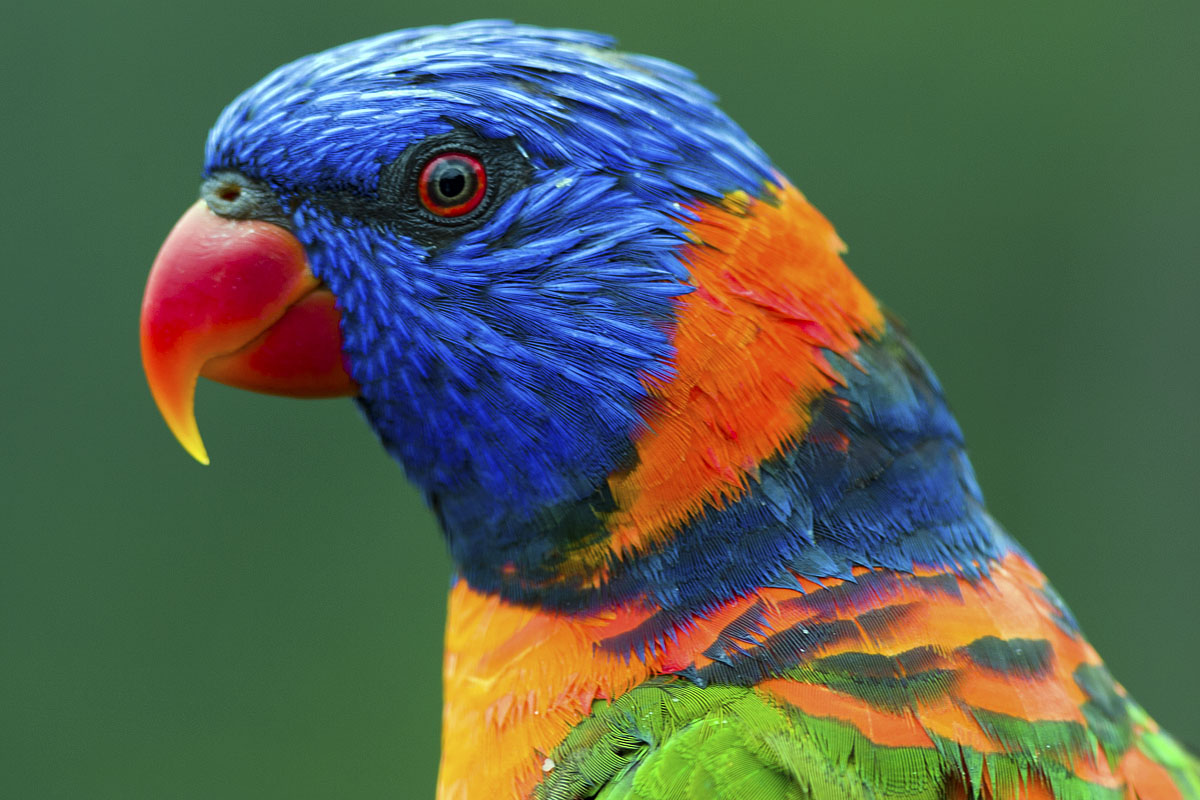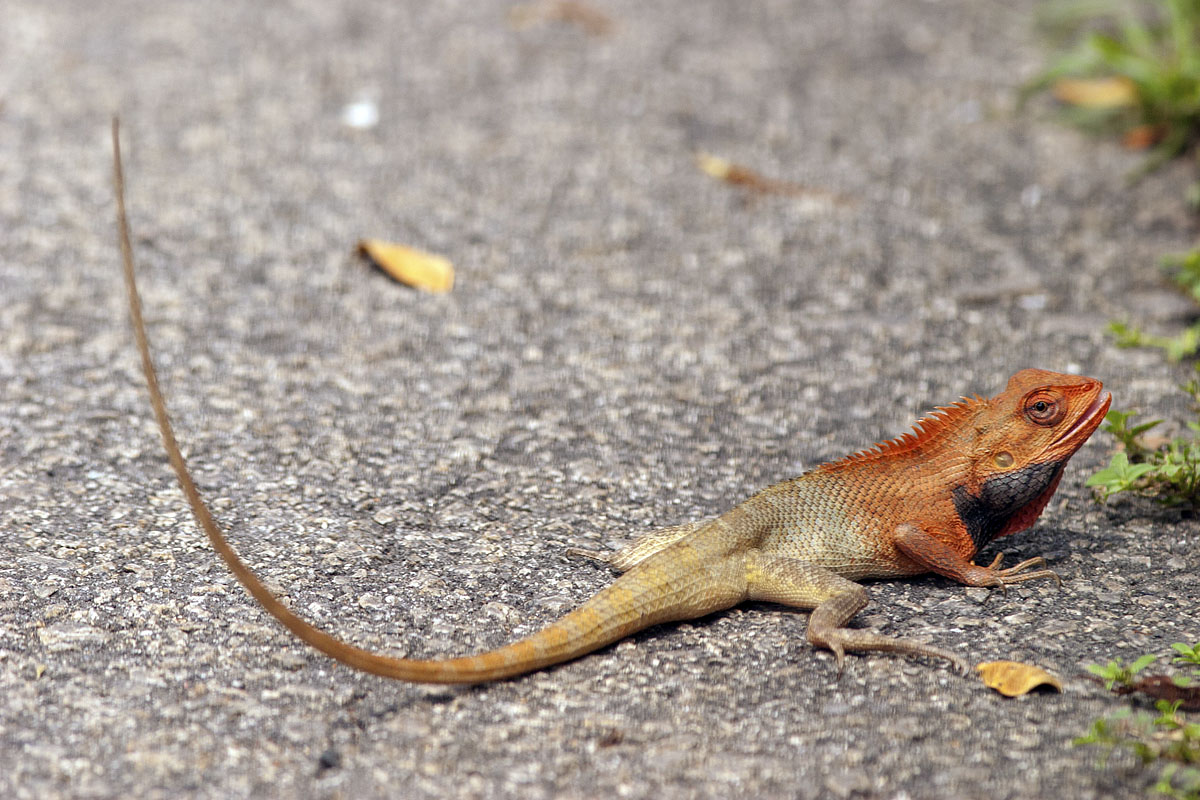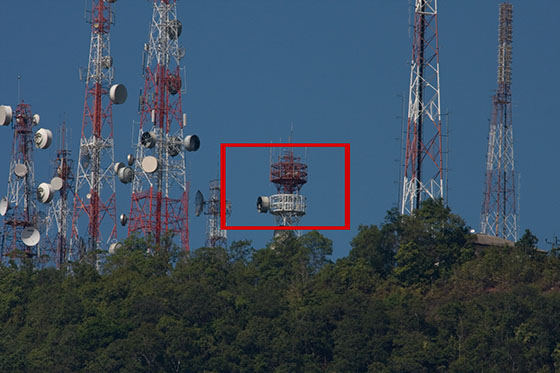Canon EF 300mm f/4.0L IS Lens Review
Product Images



Sample Images
A selection of photos taken with my Canon EF 300mm f/4L IS lens in Thailand and Singapore. Although I did take a few 'people' shots with this lens, its focal length was most suited to wildlife and nature.
These are the best I have. I have hundreds of bird photos taken with this lens at the Thale Noi wetlands reserve in Phattalung that are unusable. The occasional photo was satisfactory, but most were terrible. This is the reason why I got rid of this lens.
The Canon EF 400mm f/5.6L that I replaced it with delivers far superior image quality and sharpness. When Canon eventually decide to release a Mark II version of the EF 300mm f/4L IS with the latest technology IS and lens coatings it will be an amazing lens, but my personal experience with the original version wasn't very positive.
As they say in Internet parlance, your mileage may vary (YMMV).

Canon EF 300mm f/4L IS | Canon EOS 10D | ISO:200 | Aperture: f/5.6 | Shutter Speed: 1/125s

Canon EF 300mm f/4L IS | Canon EOS 10D | ISO:400 | Aperture: f/8 | Shutter Speed: 1/125s

Canon EF 300mm f/4L IS | Canon EOS 10D | ISO:200 | Aperture: f/5 | Shutter Speed: 1/160s

Canon EF 300mm f/4L IS | Canon EOS 10D | ISO:200 | Aperture: f/6.3 | Shutter Speed: 1/400s

Canon EF 300mm f/4L IS | Canon EOS 10D | ISO:200 | Aperture: f/5 | Shutter Speed: 1/500s

Canon EF 300mm f/4L IS | Canon EOS 10D | ISO:400 | Aperture: f/5.6 | Shutter Speed: 1/320s

Canon EF 300mm f/4L IS | Canon EOS 10D | ISO:400 | Aperture: f/5.6 | Shutter Speed: 1/800s

Canon EF 300mm f/4L IS | Canon EOS 10D | ISO:400 | Aperture: f/5.6 | Shutter Speed: 1/80s

Canon EF 300mm f/4L IS | Canon EOS 10D | ISO:200 | Aperture: f/5.6 | Shutter Speed: 1/1000s

Canon EF 300mm f/4L IS | Canon EF 1.4x II | Canon EOS 40D | ISO:200 | Aperture: f/7.1 | Shutter Speed: 1/320s
User Impressions
 My experience with this lens was a little strange (I am using past tense because I no longer own it). I loved it when I first got it and had a real blast using what is a pretty long lens on a crop camera.
My experience with this lens was a little strange (I am using past tense because I no longer own it). I loved it when I first got it and had a real blast using what is a pretty long lens on a crop camera.
As the years passed, I became more and more dissatisfied with it. Finally, it got to the stage four years later when I found it impossible to capture an acceptable image. I sold it and replaced it with the Canon EF 400mm f/5.6L.
What happened?
The first possibility is that something happened to the lens causing the image quality to degrade. However, I take good care of my equipment and when I had the lens recalibrated by Canon in Singapore they found nothing wrong.
The other explanation is that over time my standards and expectations went up.
After buying this lens I bought some very sharp lenses. It is quite probable that when images from these other lenses became my benchmark, that is when I started to become dissatisfied with the image quality of the 300mm f/4L IS.
Also, I started to take my photography more seriously and I raised my own standards.
The 300mm focal length isn't the most convenient focal length. It's too long for general photography most of the time, and not really long enough for bird photography. For birds I found I needed to add a 1.4x extender, making it a 420mm f/5.6 lens.
The first generation one-stop Image Stabilisation mechanism is OK but noticeably less effective than that used in the 70-200mm f/4L IS lens. The IS used in the 70-200mm f/4L IS completely freezes the image in the viewfinder. That doesn't happen with the 300mm and some movement can still be detected, which is amplified of course by the longer focal length.
With the 70-200mm f/4L IS it is possible to get useable handheld images at 1/15s but that isn't really the case with the 300mm f/4L IS. I would say that probably 1/25s is the slowest you can go when hand holding, but at that shutter speed it's going to be hit-and-miss whether the image is useable or not.
There is a great opportunity for Canon to upgrade this lens with the latest generation four F-stop Image Stabilisation and improve the optics as they did with the 70-200mm f/4L, the latter being a truly exceptional lens.
As with all L lenses, the 300mm f/4L IS is well-constructed. Everything works smoothly and accurately and it has a solid feel without being overly heavy. The autofocus makes a bit of a knocking/clunking sound, but that is normal and queries about the noise appear regularly on Internet forums. It focuses fairly quickly.
Weighing 1190g, it feels a lot lighter than the 70-200mm f/2.8L IS. A tripod ring is included and the built-in twist-and-lock lens hood is a lot more convenient than the bayonet-fit separate plastic lens hoods that are used on most other lenses.
With The Canon EF 1.4x II Extender
For more image samples of this lens when used with the Canon EF 1.4x II extender, see: Canon EF 1.4x II Extender/Teleconverter
With this lens, as with other Canon lenses, I cannot detect any noticeable degradation as a result of using the Canon EF 1.4x II extender.
Recalibration
I remember being very pleased with this lens when I first got it and then becoming dissatisfied around the same time that I got my 70-200mm f/4L IS. I put this down to the excellent performance of the latter lens, thus making me feel dissatisfied with the older one.
However, I started to wonder if there was something else. In September 2008 I made a trip down to Singapore, where I know the Canon service centre to be very good. I took the opportunity while I was there to get the lens checked out.
The initial check revealed nothing and it came back with a standard 'working to spec' comment. I had not left my camera with them initially. Subsequently, I spoke to the head technician and he agreed to check it again, along with my camera.
This time he made an electrical adjustment in the lens and told me it had reached the limit of its adjustment. If it was still out, then he could make an adjustment to the camera autofocus mechanism.
When I tested the lens after the recalibration it seemed better but maybe this was because I wanted it to be better.
I struggled along with the lens for another two years, doing everything in my power to get the most from it, before deciding the only course of action was to sell it.
Final Testing
I gave this lens every chance. I had it checked out by Canon and I kept telling myself that I was doing something wrong. Eventually I spent about three days doing some very careful testing.
I used a steady tripod, a remote release, mirror lockup, and a combination of autofocus and manual focus with Live View. The results weren't good ... at all.
I sold it and replaced it with the Canon EF 400mm f/5.6L. As soon as I got the Canon EF 400mm f/5.6L, I did some quick testing and it was immediately apparent that this lens was a LOT better.
The question remains in my mind: Was my EF 300mm f/4L IS lens typical, did I get a bad one (a so-called 'bad copy'), or did something happen at some stage to affect the image quality? If there was something wrong, why didn't this come to light when Canon checked the lens?
The following image is of some TV transmitters located a fair distance away. Conditions were bright, clear and sunny. I took great care with each photo.
In the 100% crops you can clearly see how much better the Canon EF 400mm f/5.6 lens performs; also that the EF 1.4x II extender hardly affects image quality.

The following image samples are 100% crops straight out of the camera with no noise reduction or post-processing at all. Click on the thumbnails for a larger image (needs Javascript enabled).
Lens: EF 300mm f/4L IS
ISO: 200
Aperture: f/5.6
Shutter speed: 1/2500
Focal length: 420mm
EC +/-: 0
Monopod/Tripod: Gitzo GT2541EX
Flash: No
Extender: Canon 1.4x II
File Size: 88.5 KB
Lens: Canon EF 400mm f/5.6L
ISO: 200
Aperture: f/5.6
Shutter speed: 1/3200
Focal length: 400mm
EC +/-: 0
Monopod/Tripod: Gitzo GT2541EX
Flash: No
Extender: No
File Size: 103 KB
Lens: Canon EF 400mm f/5.6L
ISO: 200
Aperture: f/8.0
Shutter speed: 1/1600
Focal length: 560mm
EC +/-: 0
Monopod/Tripod: Gitzo GT2541EX
Flash: No
Extender: Canon 1.4x II
File Size: 107 KB
With the following bird images, the birds were a long way in the distance. As before, I took extreme care while taking the photos. These are crops but not quite 100%. The crop size and post-processing for each image are exactly the same.
My conclusion is that the image from the EF 400mm f/5.6L is useable, but that the one from the EF 300mm f/4L IS isn't. I have hundreds more similar images from the EF 300mm f/4L IS that aren't useable.
As a photography enthusiast, I have spent a lot of money on ancilliary equipment to ensure I get the most out of my cameras and lenses. I work on my technique and I also spend time and money travelling to places to take photos.
If a piece of equipment lets me down it makes the whole effort a waste of time and money, and I can't afford to waste my time or money. Unfortunately, this lens let me down on more than one occasion.
Lens: EF 300mm f/4L IS
ISO: 200
Aperture: f/8.0
Shutter speed: 1/800
Focal length: 420mm
EC +/-: 0
Monopod/Tripod: Gitzo GT2541EX
Flash: No
Extender: Canon 1.4x II
File Size: 190 KB
Lens: Canon EF 400mm f/5.6L
ISO: 200
Aperture: f/9.0
Shutter speed: 1/500
Focal length: 560mm
EC +/-: 0
Monopod/Tripod: Gitzo GT2541EX
Flash: No
Extender: Canon 1.4x II
File Size: 228 KB
Image Stabilisation
Compared to the Canon EF 70-200mm f/4L IS lens, the IS system on the 300mm f/4L IS is old technology (one stop versus four stops). The IS system on the EF 300mm f/4L IS lens definitely works - and is quite effective up to a certain extent - but you need to take a lot more care while shooting with this lens.
The IS has to be switched off when using a tripod. When the lens is completely still, the IS system gets confused and the subject starts to move in the viewfinder by itself.
As well as being able to turn the IS feature on or off via a switch on the lens, there are two IS modes from which you can choose: 1 or 2.
Mode 1 is for general hand-holding usage and the IS system adjusts for vertical and horizontal shake. Mode 2 is designed to be used if you are panning a subject horizontally; the IS system ignores horizontal movement and only adjusts for vertical shake.
Recently Produced Lenses
In the days of film, most people just had small prints made from their negatives. This wasn't very demanding on lenses. The digital age has changed everything, allowing users to blow up images to full size on their computers; the so-called pixel peepers.
Although I wouldn't class myself as a pixel peeper, there is no doubt digital photography has had a big impact on lens manufacturing quality standards.
With the Canon EF 100-400mm L IS Mark 1 zoom it is often said that early versions produced soft images, but that new versions are very sharp. Personally, it's a lens I have never been very keen on and have never wanted.
My EF 300mm f/4L IS was manufactured in 2005 and I am sure it had a fault, even though Canon's Singapore service centre couldn't find one. If I bought another EF 300mm f/4L IS today it is possible that my experience would be very different. If you buy this lens (or if you have already bought this lens), it is possible that your experience will also be very different.
When I wrote this page originally there was no EF 100-400mm f/4.5-5.6 L IS Mark 2 in existence. Reviews so far have been glowing - the same, in fact, for every newly announced Canon lens in recent years. If you are in the market for a 400mm Canon lens, just get the EF 100-400mm f/4.5-5.6 L IS Mark 2. It's very sharp, has the latest IS technology, and the focal length range is very useful.
Conclusion
If you want a reasonably-priced Canon lens around 400mm you have four options: the 300mm f/4L IS plus the 1.4x extender, the 400mm f/5.6L, the 100-400mm f/4.5-5.6 L IS Mark 1 or 100-400mm f/4.5-5.6 L IS Mark 2. I have no experience with the zoom lenses, and they are the most expensive options.
On paper the 300mm f/4L + 1.4x extender is a better choice over the 400mm f/5.6L. You can have 300mm f/4 or 420mm f/5.6, plus you have image stabilisation and a relatively close minimum focusing distance, which you don't have with the 400mm f/5.6.
It all sounds great ... on paper.
However, because of the poor image quality I experienced with the lens, I simply can't recommend it. If you want a longer fixed focal length go for the EF 400mm f/5.6 L.
There have been huge jumps in lens quality in recent years and the old adage about zooms not being as good as fixed lenses no longer applies. Both the EF 70-300mm f/4-5.6 L and EF 100-400mm f/4.5-5.6 L Mark 2 get rave reviews. They will both give you a 300mm focal length, plus a lot more.
Would I Buy One Now?
Definitely not, and this isn't simply because I had a bad experience with a bad copy of this lens. The EF 300mm f/4L is now very old with first generation IS and technology has come a long way since it was introduced. Hoping Canon will be introducing a new version soon and when they do it will be a fantastic lens.
If I wanted a 300mm focal length lens now I would be looking at one of the 70-300mm zooms, which are very good. The Canon EF 70-300mm f/4-5.6L IS and Canon EF 70-300mm f/4-5.6 IS II are both excellent lenses that get great reviews, and the low price of the latter makes it quite a bargain.
I wouldn't even recommend a used EF 300mm f/4L in good condition.
Post-Processing
Most original images were shot in the RAW format and converted with Adobe Camera Raw. Noise was reduced using Imagenomic Noiseware Professional. Small amounts of image enhancement were applied using Adobe Photoshop CS2 (curves, levels, saturation) before sharpening using the Smart Sharpen filter (Amount: 30% - 120%, Radius: 0.2px - 0.3px, Remove: Lens Blur).
The large JPG images that open if you click on a thumbnail were saved with a 'High' quality setting of '8' on a scale of 0-12.
Lens Details
Weight: 2.6 lbs; 1,190 g
Filter Diameter: 77mm
Closest Focusing Distance: 4.9ft; 1.5m
Minimum Aperture: f/32
Maximum Aperture: f/4
Autofocus: Ring-Type Ultrasonic Motor
Lens Code: UT0907
Date Manufactured: September 2005
Date Purchased: March 2006
Supplier: Cathay Photo, Singapore
Price: 2,250.00 Singapore dollars
Lens Hood: Built-in
Soft Case: LZ1128 (included)
Tripod collar: Included
Other Review Pages You May Be Interested In







